Common Podiatry Sports/Active Injuries and Treatments
Delivering effective foot treatments & surgery for sports/active injuries.
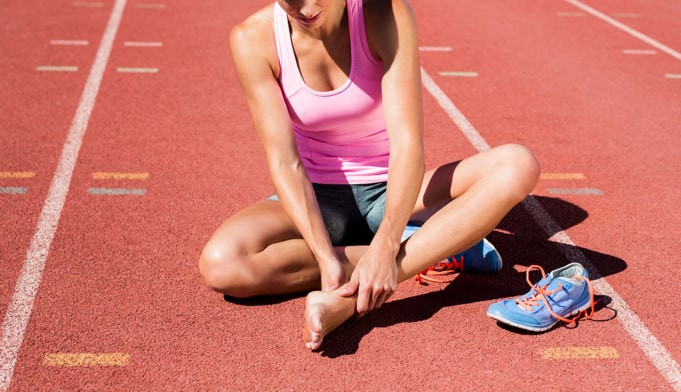
Sprains & Tears
Sprains and tears are some of the most frequently occurring injuries for athletes and people that are active. They can cause pain, swelling, and in many cases redness and bruising.
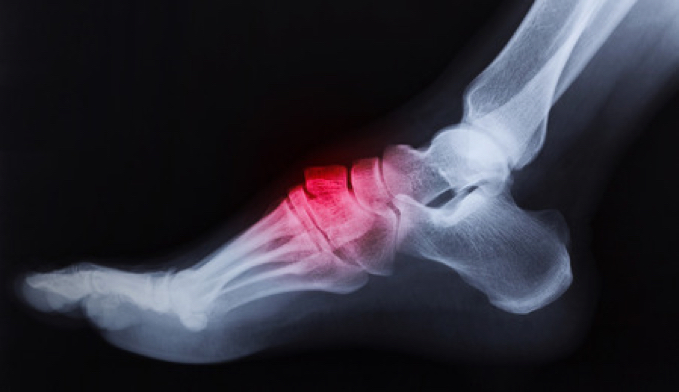
Fractures & Breaks
Foot fractures are common and painful. Typically caused by falls, twisting, or direct impact to the foot or ankle. In most cases made worse by attempting to walk or put weight on the foot.

Plantar Fasciitis
Plantar fasciitis is common with runners. Typically, pain is felt in the inside edge of the heel and increased with movement and by added weight to the heel.
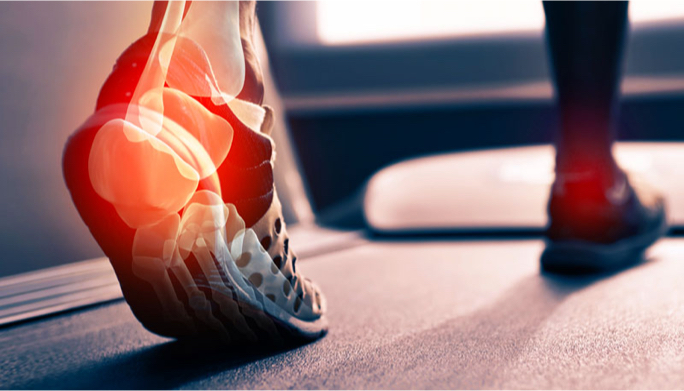
Tendonitis
Foot and ankle pain is typically the first sign of tendonitis, however, the pain is unique because it comes and goes. Tendonitis can affect many of the tendons and ligaments in the foot, heel and ankle.

Heel Spurs
A heel spur is a calcium deposit causing a bony protrusion on the lower heel bone. Heel spurs often occur in athletes participating in sports involving running and jumping.
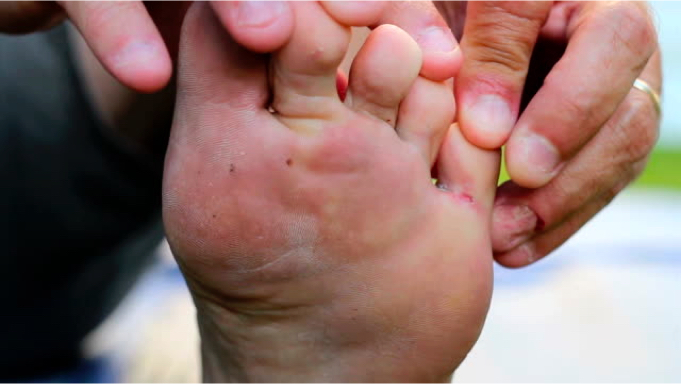
Athletes Foot
A chronic infection caused by various types of fungus, Athlete’s foot is often spread in places where people go barefoot such as public showers or swimming pools.
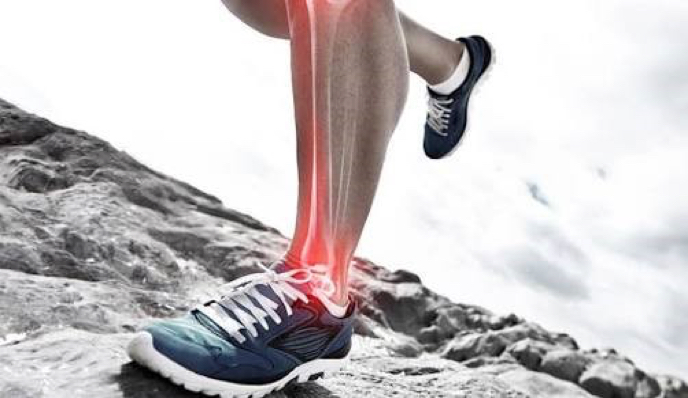
Shin Splints
Shin splints are caused by the overuse of muscles that attach to the tibia, which then becomes inflamed. Shin splints are commonly caused by running or excessive exercise.
If it's about your foot or ankle.
We can help!
Sports Medicine & Injuries Surgery Options
Othering Minimally Invasive Surgery Options
- Tendinitis – TENEX Procedure (plantar fasciitis)/tendon debridements
- PRP Injections
- Ankle Injuries/Sprains – lateral ankle stabilization Ankle injuries (OCDs), and talar dome grafting/repair
- Hallux Rigidus (Big Toe Joint Arthritis) – 1st metatarsophalangeal joint replacements (arthrosurface)
- Achilles Tendon – Repairs & tendon transfers, lengthening & shortening procedures
- Heel spurs – Release of the plantar fascia & removal of the heel spur
Overview
Fitness and Your Feet
Your feet are one of the most overlooked body parts when it comes to exercise. As you exercise, pay attention to what your feet are telling you. Consult your physician before beginning any fitness program. This includes a complete physical and foot exam. This is especially important for those who are overweight, smoke, or haven’t had a physical exam in a long time. Proper fitness requires wearing the right clothes and shoes. Wear loose-fitting, light-colored and loosely woven clothing in hot weather and several layers of warm clothing in cold weather.
Overview
Fitness and Your Feet
The American Podiatric Medical Association stresses the importance of foot care in exercising. People don’t realize the tremendous pressure that is put on their feet while exercising. For example, a 150-pound jogger puts more than 150 tons of impact on his feet when running three miles. Improper foot care during exercise is a contributing factor to some of the more than 300 foot ailments, according to the APMA.
The following are common ailments caused by improper foot care during exercise:
- Athlete’s foot;
- Blisters;
- Corns and calluses; and
- Heel pain (including heel spurs).
Leading Fitness Issues with Feet
Baseball
Baseball is the national pastime in America. From kids to adults, playing baseball is one of the most enjoyable team sports. But as with other sports, its important that you keep yourself in good condition and have the right equipment to play safely and enjoy the health benefits of the game. Baseball players are advised to condition their entire bodies and be sure to stretch the leg, ankle, and foot muscles before, during, and after play to avoid injuries.
Baseball can be characterized by lots of stops and starts, lots of running, and, of course sliding. Practice and technique can enhance your competency and enjoyment of the game, but they are also crucial for building up the muscles needed in baseball. The rapid and changing movements associated with the sport place many pressures on your feet and ankles. Inadequate stretching, improper shoes, and repeated motions lead to the most common foot problems that occur among baseball players, such as Achilles tendonitis, plantar fasciitis, shin splints, stress fractures, ankle sprains, and bone fractures.
Baseball Shoes and Cleats
As with most athletic shoes, comfort is the most important element in choosing the right baseball shoe for you. Look for shoes with a roomy toe box that give your toes enough room to wiggle. The widest part of your foot should fit comfortably into the shoe without stretching the upper. Look for a snug heel to help keep your foot stable. Most importantly, remember to replace your baseball shoes after 70 to 75 hours of active wear.
For league play, cleats may be recommended to give you the traction needed for the surface in the diamond. Baseball cleats come in a variety of materials ranging from leather and synthetic materials (plastics) to rubber and metal. Be sure to follow the regulations of your league regarding the material allowed; many leagues no longer permit the use of metal spikes or cleats, particularly on artificial turf. Be sure to give yourself time to adjust to cleats by wearing them on the designated surface.
Basketball
With all its running, twisting, turning, and jumping, basketball is one of the hardest games on feet. Different movements put all the areas of the foot at risk. That is why proper conditioning, stretching, and well-fitted shoes are critical to a healthy enjoyment of the sport.
Ankle sprain is a particularly common injury in basketball. But the repeated shock and pressures on the foot can also lead to inflammations, including Achilles tendonitis, plantar fasciitis, and sesamoiditis.
Basketball Shoes
Foot and ankle stability, shock absorption, and traction are the most important qualities for basketball shoes. If you are susceptible to ankle injuries, consider a high-top or three-quarter shoe that provides added support to key foot structures during play. Look for shoes that offer the following:
- A wide toe box with plenty of room for your toes to move around. Not enough room can lead to blisters, corns, and calluses.
- Lightweight, breathable material for uppers; generally, leather is recommended.
- Dense, abrasion-resistant soles that are low to the ground for better traction and support.
- A well-cushioned midsole for a shock-absorbing layer. An EVA or EVA-compressed layer is lightweight but not as durable or stable. A polyurethane layer has greater stability, but it is often heavier, too.
- Bend in the forefoot of the shoe, which is at the ball of the foot near the toes. Be sure there is less bend in the arch where you need the added support to keep the foot stable.
- A firm heel counter that fits snugly.
- Laces as the form of closure give you the ability to adjust for the support you need throughout the foot.
When buying basketball shoes, be sure to take the socks you plan to wear with them to ensure a proper fit. Have your feet measured standing up and fit the shoes to your larger foot. Walk around, turn, twist, and jump in each pair on a hard surface to see how your foot feels during each of these movements. Most importantly, make your choice based on comfort.
Cycling
Since the bicycle’s invention in the early 1900s, it has been a favorite form of recreation and sport in the U.S. More than 100 million Americans enjoy biking, either for recreation or, increasingly, for commuting to work each day. While a great workout for most of the body, feet play a vital role in cycling. They are responsible for the transfer of energy from the body to the pedals, which makes the bicycle move.
Keeping the alignment between the hips, knees, and feet is the most efficient way to operate a bicycle. Lack of proper body alignment and overactivity are responsible for the most common foot problems related to biking: Achilles tendonitis, sesamoiditis, shin splints, and foot numbness or pain.
Cycling Shoes
For the casual or recreational cyclist, a typical athletic shoe used for running, walking, or cross-training is perfectly fine for biking. Just be sure that the sole is firm and not worn down so that it grips the pedal to avoid slipping.
For more serious cyclists, next to bicycles themselves. proper shoes are the most important piece of cycling equipment. In general, cycling shoes should have a stiff sole and fit snugly around the bridge of the foot and heel. The more stable and less movement inside the shoe, the more power can be transferred through the entire foot to the pedal. Also look for shoes with ventilated uppers to keep feet more comfortable. Closure systems vary, including lacing, buckles, straps, and Velcro — or some combination. You can choose whichever feel most comfortable to you. However, be careful that any loose ends (from straps or laces) and buckles don’t hang over, as they can pose a safety hazard if you elect to use toe clips.
The type of biking you do can impact your choice of shoes as well. For road cycling and racing, shoes that have stiff soles, a narrow heel, and snug fit are best. For mountain biking, the shoes also need a decent tread for better grip and a more rugged sole.
Many serious cyclists use some form of a toe clip system. These allow the rider to transfer power from the body to the pedal in both the up and down motions of the leg. Simple toe clips have metal or plastic clips that attach to any type of shoe with strapping. However, they are not as efficient at energy transfer because they allow the foot to bend. Additionally, hanging straps can pose a danger. Clipless systems use metal or plastic cleats in the sole of a shoe that attach to bindings on the pedal. These are a good choice for road or race cycling, but they do take some adjusting to initially. Also, the cleats make the shoes unwearable for walking. Clips are generally not advised for mountain biking since the foot comes off the pedal frequently.
Remember to take the socks you plan to wear with you when trying on cycling shoes to make sure the fit is right.
Golf
A large part of the attraction of golf is the time spent outdoors. During an 18-hole round of golf, the typical player walks four-to-five miles over the course of three-to-five hours. That’s a lot of time spent on your feet. At the same time, the biomechanics of golf make your feet as important to the success of your swing as any other part of the body. Getting and keeping your feet in the right position to help carry the force of the swing through properly can be impacted by the shoes you wear.
Common foot injuries and problems associated with golf are related to overdoing it, particularly if an underlying structural problem exists in your feet. This includes tendonitis, capsulitis, and ligament sprains and pulls, which can keep a golf enthusiast off the green. Improper shoes can bring on blisters, neuromas, and other pain in the feet. Podiatrists see these problems daily and can treat them conservatively to allow for a quick return to the sport.
Golf Shoes
Remember that you’ll spend a lot of time on your feet standing and walking during golf, so look for shoes that are comfortable. Golf shoes come in a variety of types, from the traditional oxford-style to sandals and even boots. Whichever style you choose, look for shoes that are lightweight, well-cushioned in the soles and heels, made from a breathable material, water resistant and offer traction. The middle of the shoe should feel a little tighter than your everyday shoes to support your swing. Be sure to try on golf shoes with the socks you will normally wear to make sure to get the right fit.
More serious golfers may be interested in purchasing spikes. Just give yourself time to adjust to walking wearing spikes and make sure you know the policy for wearing them on each golf course. Spikes give added traction and help stabilize the foot during play. Spikes are made from different materials. Soft, polyurethane spikes that are less damaging to the green and lightweight, but don’t offer as much traction as a heavier material. Carbide or ceramic spikes are for serious golfers who spend a lot of time on the greens. They are made of durable materials that often outlast the shoe’s upper. Metal spikes often last the life of the shoe, are very durable, give good traction but must be carefully maintained to prevent rust.
Jogging and Running
Jogging gained enormous popularity in the 1970s as a great form of cardiovascular fitness. Since then running has become one of the most popular form of physical fitness in America. Whether you run on an indoor track or outdoors, you can enjoy this activity year-round and fit it comfortably into your daily routine.
During jogging or running, the 26 bones, 33 joints, 112 ligaments, and a network of tendons, nerves, and blood vessels that make up the foot all work together. That’s why you need to condition your body, build up to a routine, and stretch your muscles, tendons, and ligaments before and after each run. Debilitating muscle strain or more serious injury can result when runners or joggers don’t build up their routines and allow their bodies to strengthen over time.
The most common foot problems associated with jogging or running are blisters, corns, calluses, Athlete’s Foot, shin splints, Achilles tendonitis, and plantar fasciitis. You can prevent many simple foot problems by using proper foot hygiene. Keep your feet powdered and dry. Wear clean socks every time you run. Make sure your shoes fit properly. Most importantly, let your body be your guide so that you don’t overstrain your legs, ankles, and feet. If you develop recurring and/or increasing aches and pains from jogging or running, please contact our office and we’ll help you pinpoint the problem and prevent more serious injury or long-term damage to your feet.
Jogging/Running Shoes
Because of the force placed on your legs, ankles, and feet, jogging/running shoes need to provide cushioning for shock absorption. Like walking shoes, you need to select a pair designed for the shape of your foot and your natural foot structure or inclination.
There are three basic foot types:
- Pronators are people with relatively flat feet, caused by low arches, which generally leads to overpronation, or a gait in which the ankle rolls inward excessively. People with this foot type need motion control shoes that offer support for mid-foot. Motion-control shoes are more rigid and built on a straight last. These are generally board-lasted shoes, which have a piece of cardboard running the length of the shoe for greater stability. Look for sturdy uppers for added stability and avoid shoes with a lot of cushioning or highly curved toes. Also look for a reinforced heel counter to maintain foot support and stability.
- Supinators are people with high arches, which can lead to underpronation that places too much weight on the outsides of the feet. People with this foot type need stability shoes designed for extra shock absorption and often having a curved or semi-curved last. A slip-lasted shoe is also recommended, because the sewn seam runs the length of the shoe giving it greater flexibility. Also look for shoes that are reinforced around the ankle and heel to stabilize the foot and extra cushioning under the ball of the foot.
- People with normal feet can wear any type of running shoe, although a curved last is generally preferred.
When you run, your foot rolls quickly from the heel to the toe, with your foot bending at the ball on each step. That’s why it is important for running shoes to have enough flexibility in just the right places. However, to help with shock absorption, you need a little more rigidity to support the middle of the foot. Make sure the heel is low, but slightly wider than a walking shoe to help absorb the initial shock when your heel strikes the ground.
Here are some other important tips for buying a good pair of running shoes:
- Shop at the end of the day when your feet are slightly swollen to get a good fit.
- Try on shoes with the socks you will wear when walking. If you use an orthotic, bring that to the store when you try on shoes as well.
- Have your feet measured standing up and fit your shoes to the larger of your two feet.
- Be sure there is enough room in the toe box for your toes to wiggle and about a half inch between your toes and the end of the shoe.
- Take time when shopping to try on different brands and walk around the store in each pair. Be sure to walk on a hard surface, not just on carpeting. Let your foot be the guide to the fit, not the shoe size or style.
- Look for lightweight, breathable materials for greater comfort.
- Run your hand all over and inside the shoes to feel for any seams or catches that might irritate your foot.
- Choose shoes that lace for better foot stability and control.
- Make sure your heel fits snugly and does not tend toward slipping out of the shoe.
- Consider buying two pairs and rotating your wear to give each pair time to breath between runs and extend the life of each pair.
- Replace running or jogging shoes twice year or about every 400 miles.
Tennis
Quick starts and stops and lots of movements from side to side are the characteristics that make tennis challenging — and stressful on your feet. Amateur and professional tennis players alike are prone to injuries of the foot and ankle, primarily from repeated lateral motions and quick stopping and starting. Clay and crushed stone courts help players slide better, and are considered the safest surfaces on which to play. Asphalt, concrete, rubberized, or carpeted courts don’t allow sliding, and are not as healthy for your feet.
Common tennis injuries include ankle sprains, stress fractures, plantar fasciitis, and tennis toe. If you experience recurring or persistent pain, please contact our office for an evaluation.
The best way to prevent foot injuries from tennis is to make sure you condition yourself. This includes building all-around body strength and flexibility; stretching the muscles (particularly in your calves) before, during and after play; drinking lots of water; and wearing the right shoes.
Tennis Shoes
Tennis shoes need lots of cushioning and shock absorption to deal with all the forces placed on your feet during play and to keep your foot and ankle stable. Be sure to choose shoes specifically for racquet sports; running shoes, for example, don’t have the support needed for the side-to-side movements common to tennis. Look for a tennis shoes that have a reinforced toe, wiggle room in the toe box, padding at the ball of the foot, sturdy sides, a low, well-cushioned heel that is not flared, and a firm heel counter for support.
When shopping for tennis shoes, follow these tips:
- Try on shoes with the socks you normally wear to make sure the fit is right.
- Go shopping at the end of the day when your feet are larger and fit your shoes to the larger of your two feet.
- Let your feet be your guide to fit. Choose only shoes that are comfortable in the store — don’t expect a wear-in period. The shoes should feel supportive, cushioned. and flexible, with some resistance in the heel for greater stability.
- Walk around the store in each pair you try on. Be sure to walk on a hard-surface, not just a carpeted floor. Emulate tennis play by jumping up and down in the shoes and making some fast turns to see how the shoes will really perform.
Stretching
Before beginning any exercise regimen, proper stretching is essential. If muscles are properly warmed up, the strain on muscles, tendons, and joints is reduced.
Stretching exercises should take 5 to 10 minutes and ought to be conducted in a stretch/hold/relax pattern without any bouncing or pulling. It is important to stretch the propulsion muscles in the back of the leg and thigh (posterior) as well as the anterior muscles.
Some effective stretching exercises to prepare the foot and ankle for exercise include:
- The wall push-up. Face a wall from three feet away, with feet flat on the floor, and knees locked. Lean into the wall, keeping feet on the floor and hold for 10 seconds as the calf muscle stretches, then relax. Do not bounce. Repeat five times.
- The hamstring stretch. Put your foot, with knee straight and locked, on a chair or table. Keep the other leg straight with knee locked. Lower your head toward the raised knee until the muscles tighten. Hold to a count of 10 then relax. Repeat five times, then switch to the other leg.
- Lower back stretch. In a standing position, keep both legs straight, feet spread slightly. Bend over at the waist and attempt to touch the palms of your hands to the floor. Hold the stretch for 10 seconds and repeat 10 times. Do not bounce.
Excessive tightness of the calf muscles can contribute to many foot and some knee problems. A key point of injury is the Achilles tendon, which attaches the calf muscle to the back of the heel. When the calf muscle tightens up, it limits the movement of the ankle joint.
Calf muscle stretching is very useful in the prevention and treatment of many foot problems. Two typical methods for stretching your calf muscles include the wall push-up (described above) and this technique: Standing approximately two feet from a wall. While facing the wall, turn your feet inward (“pigeon toed”) and lean forward into the wall, keeping your heels on the floor and the knees extended. Keep your back straight and don’t bend at the hips. Hold the stretch for 10 seconds and do the stretch 10 times in a row.
Other Podiatry Services
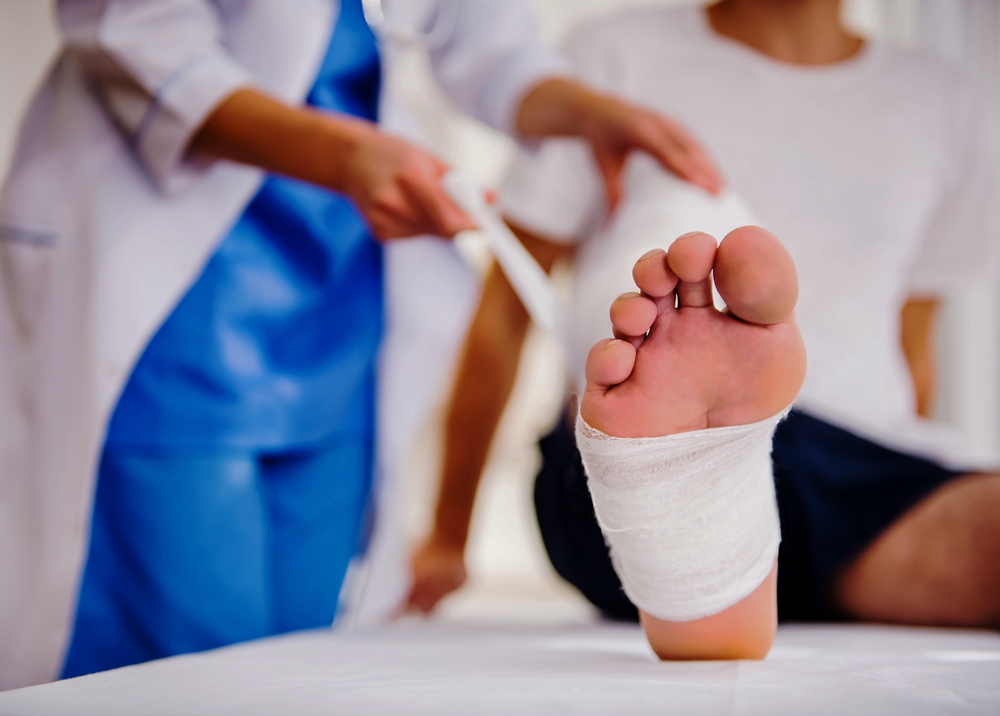
Foot Treatments & Surgery
- Bunions
- Diabetic Foot
- Hammer Toes
- Neuroma
- Ulcer Treatment
- Ganglion cysts
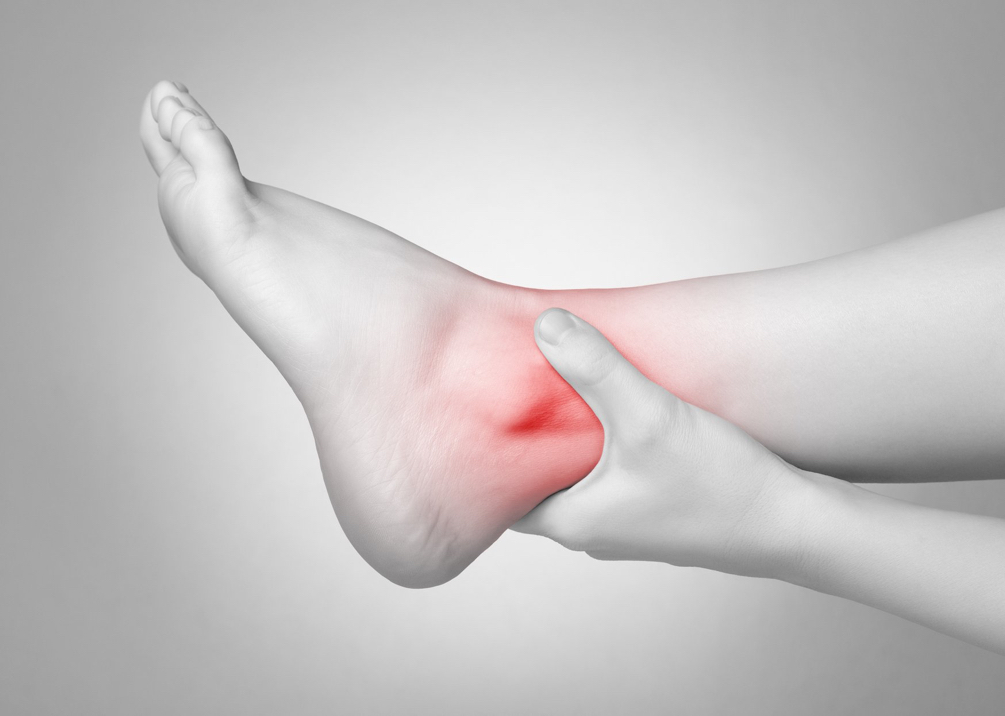
Ankle Treatments & Surgery
- Fractures
- Ankle Fusions & Surgery
- Sprains
- Achilles Tendonitis
- Arthritis
